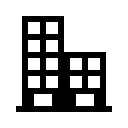Since many people were asking questions related to the syllabus of history, here's the entire thing....
SECTION A: CIVICS
1. The Union Legislature
The Union Parliament - definition of
Parliament. A brief idea of the federal
setup in India.
(i) Lok Sabha - term, composition,
qualification for membership,
disqualification of membership.
Parliamentary procedures: a brief idea of
sessions, quorum, question hour, motions
– adjournment and no-confidence motion.
Speaker – selection and functions.
(ii) Rajya Sabha – composition, qualification
for membership, disqualification of
membership, election, term, presiding
officer.
Powers and functions of (a) Rajya Sabha (b)
Lok Sabha - legislative, financial control over
executive, judicial, electoral, amendment of
the constitution. Relationship between the two
Houses – differences. Anti–defection law.
2. The Union Executive
(a) The President: election, term of office,
powers.
Qualifications for election, composition
of Electoral College, reason for indirect
election, term of office, procedure for
impeachment.
Powers – executive, legislative, financial,
judicial, discretionary and emergency.
Position of the President in a
Parliamentary setup.
(b) The Vice-President:
Qualifications for election, term of office
and powers.
(c) Prime Minister and Council of Ministers:
Appointment, formation of Council of
Ministers, tenure, functions - Policy
making, administrative, legislative,
financial, emergency. Position and powers
of the Prime Minister. Collective and
individual responsibility of the members
of the Cabinet. Distinction between
Council of Ministers and Cabinet.
3. The Judiciary
(a) The Supreme Court:
Composition, qualification of judges,
appointment, independence of judiciary
from control of executive and legislature;
Powers of the Supreme Court;
Jurisdiction and functions: Original,
Appellate settlement of disputes,
enforcement of Fundamental Rights,
Advisory, Revisory Judicial Review and
Court of Record.
(b) The High Courts:
Composition, qualifications of judges,
appointment, conditions of service;
Powers of the High Court; Jurisdiction
and functions; Original, Appellate.
settlement of disputes; enforcement of
Fundamental Rights, Writs, Advisory,
Revisory, Judicial Review, Court of
Record.
61
(b) Subordinate Courts:
Distinction between Court of the District
Judge and Sessions Court.
Lok Adalats: meaning and advantages.
SECTION B : HISTORY
1. The Indian National Movement
(1857 – 1917)
(a) The First War of Independence, 1857
Only the causes (political, socio-religious,
economic and military) and consequences
will be tested. The events, however need
to be mentioned in order to maintain
continuity and for a more comprehensive
understanding.
(b) Factors promoting growth of Nationalism,
foundation of the Indian National
Congress - immediate objectives.
Factors promoting the growth of
Nationalism – economic exploitation,
repressive colonial policies, socioreligious
reform movements (brief
mention of contribution of Raja
Rammohan Roy and Jyotiba Phule), rediscovery
of India’s past, influence of
western education, role of the Press,
modern means of transport and
communication. The Indian National
Association (Surendranath Banerjee) and
the East India Association (Dadabhai
Naoroji) as precursors of the Indian
National Congress should be highlighted.
The first two sessions and their presidents
should be mentioned.
(c) Programme and achievements of the Early
Nationalists.
The basic beliefs, objectives, programme,
methods of struggle and achievements of
the Early Nationalists. Any two
contributions of Dadabhai Naoroji,
Surendranath Banerjee and Gopal
Krishna Gokhale.
(d) The rise of Assertive Nationalism
Causes of the rise of assertive
nationalism, the basic beliefs, objectives,
programme, methods of struggle and
achievements of the Assertive
Nationalists and any two contributions of
Bal Gangadhar Tilak, Bipin Chandra Pal
and Lala Lajpat Rai.
(e) The Partition of Bengal
Reasons behind the partition of Bengal
(1905). Swadeshi and Boycott movements
and their impact, Surat split of 1907.
(f) The Muslim League
Factors leading to the formation of the
Muslim League and objectives.
(g) Lucknow Pact, Home Rule League and
August Declaration.
Objectives of Home Rule League,
Significance of Lucknow Pact and August
Declaration.
2. Mass Phase of the National Movement -
(1915-1947)
(a) Mahatma Gandhi:- Non-Cooperation
Movement : causes (Khilafat Movement,
Rowlatt Act, Jallianwala Bagh tragedy),
programme and suspension – Chauri
Chaura incident, and impact of the
Movement; the Civil Disobedience
Movement causes (Reaction to the Simon
Commission, Declaration of Poorna
Swaraj at the Lahore Session of 1929),
Dandi March, programme and impact
of the Movement, Gandhi-Irwin Pact and
the Second Round Table Conference; the
Quit India Movement causes (failure of
Cripps Mission, Japanese threat), Quit
India Resolution and the significance of
the Movement.
(b) Forward Bloc (objectives) and INA
(objectives and achievements).
62
(c) Independence and Partition of India –
Cabinet Mission Plan, (clauses, responses
of the Congress and the Muslim League),
Mountbatten Plan (clauses and its
acceptance) and the Indian Independence
Act of 1947(clauses only).
3. The Contemporary World
(a) The First World War
Causes (Militant Nationalism, Armament
Race, division of Europe and Sarajevo
Crisis) and results (Treaty of Versailles,
Territorial rearrangements, Formation of
League of Nations)
(b) Rise of Dictatorships
Causes for the rise of Fascism in Italy and
the rise of Nazism in Germany. A
comparative study of Fascist and Nazi
ideologies.
(c)The Second World War
Causes (Dissatisfaction with the Treaty of
Versailles, Rise of Fascism and Nazism,
Policy of Appeasement, Japanese invasion
of China, Failure of League of Nations
and Hitler’s invasion of Poland). Brief
mention of the bombing of Hiroshima and
Nagasaki. Consequences (Defeat of Axis
Powers, Formation of the United Nations
and Cold War).
(d) United Nations
(i) The purpose, objectives and principles
of the U.N.
The composition and functions of the
General Assembly, Security Council,
and the International Court of Justice.
(ii) Major agencies of the United Nations:
UNICEF, WHO and UNESCO -
functions only.
(e) Universal Declaration of Human Rights:
Human Rights – definition and violation
(examples only)
(f) Non Aligned Movement.
Brief meaning; factors responsible;
objectives; role of Jawaharlal Nehru.
Names of the Architects of NAM. |
 |


